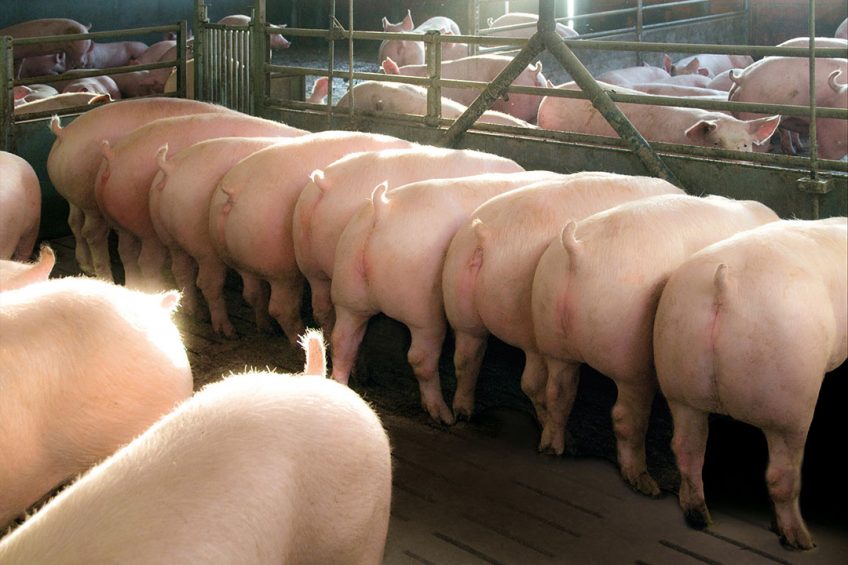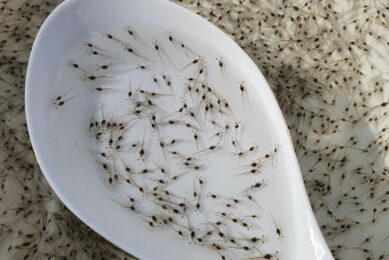7 recent advances in understanding Lawsonia

The gram-negative bacteria Lawsonia intracellularis has been known as an important agent responsible for economic losses in the swine business for many years, as the bacteria causes ileitis. Yet scientists continue to discover new insights about the bacteria, which in turn can help to better prepare for it, e.g. by implementing routine control measures.
The agent responsible for ileitis, Lawsonia intracellularis (Li) is an intracellular gram-negative bacteria that infects the enterocytes (the cells lining the intestine) causing damage primarily to the small intestine but also the large intestine. Which are some of the more recent discoveries about the bacteria?
 Lawsonia is present in most European herds
Lawsonia is present in most European herds
A recent survey of 144 European pig herds that had suffered a diarrhoea outbreak in the previous year carried out in Denmark, France, Germany, the Netherlands, Spain, and UK. The paper has confirmed earlier studies showing widespread infection, with over 90% of herds exposed to Li. Evidence using 2 tests, qPCR and ELISA confirmed those findings. The prevalence ranged from 100% of herds in the UK to 79% in France but these differences were not statistical.
There were some differences between countries;
- herds in Denmark had a higher detection rate based on serology
- while in most herds the detection of Li was concentrated in grow-finish age pigs
- in Denmark the highest rates of detection were in the nursery.
 Subclinical pigs can easily infect pen mates
Subclinical pigs can easily infect pen mates
Investigating the transmission dynamics of Li using a seeder pig model has shown infection can spread to as many as 18 (62%) pigs within a pen due to the introduction of one infected animal within a 38 day period. Importantly, this spread caused a reduction in average daily gain (ADG) for the whole pen, when compared to uninfected controls.
How did the researchers find that out? The seeder pig model was set up to learn about on farm transmission dynamics of Li. Fernando Leite and colleagues designed a study with 3 treatment groups to assess Li transmission:
- Group 1: 1 seeder animal to 29 sentinel animals;
- Group 2: 2 seeder animals to 28 sentinel animals;
- Group 3: control with only non-infected pigs.
Each treatment group was housed in a separate room and pen with 0.8 m2 (2.5 ft2) per animal. Sentinel animals were monitored for 38 days of exposure to seeder pigs. Faecal shedding of Li was tested by qPCR twice weekly for the length of the study. Shedding of Li was first detected in sentinels 14 days after introduction of the seeder pigs.
In group 1, 62% (18 of 29) shed Li and shedding peaked at 38 days, while in group 2, 86% (24 of 28) of sentinel pigs shed Li at least once during the stud, peaking at day 21. Within pen transmission is variable depending on the number of seeder pigs and this changes how fast the infection spreads. In another transmission rate study in non-vaccinated pigs, one infectious pig (shedding >103 bacteria/gram of faeces) was able to transmit Li to three susceptible pigs per week. So if pigs from infected and naïve flows would be co-mingled at the end of the nursery, infected pigs would triplicate within the population every week.
 Vaccination reduces Lawsonia transmission
Vaccination reduces Lawsonia transmission
To understand the impact of vaccination on the transmission of Li, researchers at the University of Minnesota compared both the oral and intramuscular vaccine with non-vaccinated controls. Transmission rates were significantly reduced in both vaccinated groups. The model used to predict transmission over time also showed a shorter period of faecal shedding of Lawsonia in both vaccinated groups (Oral 6.3, IM 8.3, non-vaccinated 11.2 weeks). The shedding was 43.3% shorter in the orally vaccinated pigs compared to the unvaccinated animals.
 Local immunity is critical
Local immunity is critical
Better tools are available to understand the immunity to Li. As the infection is restricted to the gut it is expected that local, or mucosal immunity is critical. The local humoral immune response (IgA antibodies) and elevated secretion of suppressive cytokines by immune cells in the intestinal wall (Cell Mediated Immunity – CMI) play an important role in protection by controlling inflammation and restoration of the intestinal cell wall. Therefore an ideal vaccine should be able to elicit a balanced immune response where both CMI and local humoral immunity to control ileitis.
In a recent study, both the oral and intramuscular vaccines induced local and humoral immune responses after challenge, although with different dynamics. The orally-vaccinated group had an earlier local IgA response, with more animals demonstrating a greater CMI response after vaccination and prior to challenge. The intramuscularly vaccinated pigs had stronger IgG antibody response in blood.
What are the practical implications?
- Vaccination is an effective way to boost the immune response and prevent the economic losses caused by ileitis.
- Oral vaccination induces an early local immunity at the gut level.
 Gut microbiome disruption affects productivity
Gut microbiome disruption affects productivity
The gut microbiome is known to influence health and productivity of pigs. The composition of the microbiome changes between different portions of the intestinal tract in swine. Therefore it is important to understand the impact that Li infection on the gut microbiome. One way to do that is by following pigs experimentally infected with Li and analyse changes in the diversity of the gut flora to understand how that impacts colonisation resistance.
That has led to the understanding that Li infection increases the susceptibility to Salmonella, probably by reducing the population of butyrate producing commensal bacteria. It has also been shown that previous infection with Li increased the severity of swine dysentery in co-infected pigs.
In short: Li is causing disruption to the healthy gut leading to increased severity of other intestinal infections. Lawsonia behaves like a door opener to other bugs.
 Lawsonia infection can increase the risk of boar taint
Lawsonia infection can increase the risk of boar taint
Both androsterone and skatole are associated with the unpleasant odour problem affecting consumer’s acceptance of pork. Skatole is produced in the gut from tryptophan found in non-digested feed ingredients and dead intestinal cells. Li infection is widespread as we have seen, and results in damage to the enterocytes, the cells that line the intestine. Li may be responsible for allowing tryptophan to increase in the hind gut resulting in higher skatole levels. Researchers have found unusually high fat skatole concentrations after dual infection with Li and Brachyspira even in castrated boars. In naturally infected pigs, Visscher and colleagues showed that subclinical Li infection had an impact on butyrate and the skatole concentration in studies using different diets. They conclude that Li vaccination would be a good way to reduce the Li impact when investigating ideal diets to avoid excessive skatole.
 Oral vaccination reduces shedding of Li
Oral vaccination reduces shedding of Li
Li has many effects on the health of the pig gut. The bacteria can change the structure of the intestine, result in reduced nutrient uptake, cause inflammation and reduced local defences. On top, it is clear that Li infection changes the gut microbiome in swine. So it is important to measure the impact of vaccination against ileitis on the healthy gut. The impact on the gut microbiome of oral vaccination (Enterisol Ileitis) after a severe challenge with Li was investigated in a comparison between vaccinated and control pigs. Following the challenge it was shown that the microbiome composition was very different and this difference grew as the infection went on longer. In the vaccinated group there was a significant reduction in shedding of Li. Those results demonstrate that vaccination can have an effect on the gut microbial community and lead to a different microbiome than non-vaccinated and diseased pigs. That change in microbiome composition is likely beneficial as it was associated with a drastic reduction in faecal shedding of Lawsonia.
References available on request
Author:
Oliver Duran, Boehringer-Ingelheim Animal Health







